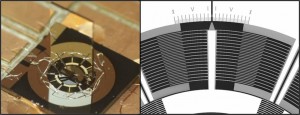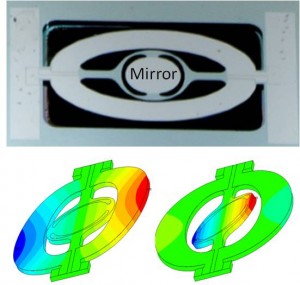Prof. Dr. Hakan Urey and OML have made substantial contributions to the development of MEMS laser scanners for mobile projectors over the past decade. To a large extent this work has been carried out in collaboration with Microvision Inc. During the last few years Microvision has established the flying spot type projector as perhaps the leading technology for pico projectors. It’s inherent ability to scale up the resolution without increasing the size of the optical engine makes it very interesting technology as the pico projector market matures.
The MEMS scanners research at OML covers the full circle of modelling and design, fabrication, and characterization. The fabrication is conducted by our own engineers at other locations, but all the characterization necessary can be done in our laboratory. We have a large and well-equipped laboratory for constructing optical, mechanical, and electrical characterization setups as well as a cleanroom dedicated for characterization of sensitive components. The lab is also equipped with a white-light interferometer for dynamic as well as static nanometer scale surface characterization.

There are two main types of MEMS laser scanners, resonant fast scanners (resonance frequencies typically >20 kHz) and quasistatically actuated slow scanners. On the slow scanner side OML recently worked hybrid approach where mirror is mounted onto an electrostatically actuated in-plane rotating stage (Figure 1). This mirror is meant to be used together with a separate fast scanner in a two scanner system. The device was published in Journal of Microlectromechanical Systems in 2012.


OML has done a lot of work on high frequency resonant scanners and has investigated different types of approaches and actuation principles. In an electromagnetically actuated 2D scanners was published in 2006 and in 2010 an electrostatically actuated 1D fast scanner. More recently work has been carried out on piezoelectric scanners, actuated by thin-film PZT (Figure 2).

